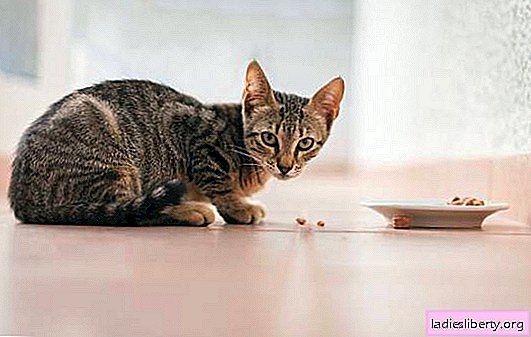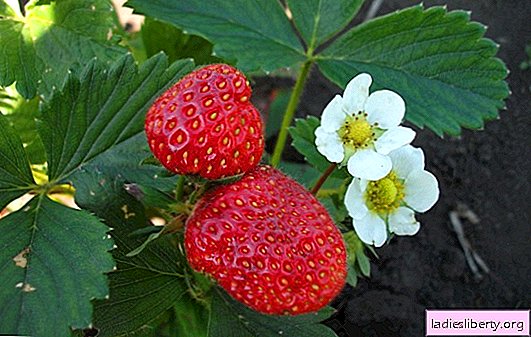
An allergy in cats to food is a fairly common phenomenon, which can bring many concerns to the owners. What to do if a cat is allergic to food?
Allergic manifestations are familiar to almost all of us. Our pets have their own allergens and irritants. These often include external environmental factors, such as perfumes, tobacco, chemicals, various harmful plants and insects. But also an allergy can manifest itself on special cat products, for example, toilet filler or food. Such cases make up the third place among all allergic reactions in cats. It is about the food type of allergy that will be discussed today.
So, food allergy is a reaction of the animal’s body in the form of irritation and individual intolerance to the ingredients of its nutrition.
Causes and most common allergens
With the constant use of the allergen and its accumulation in the body, a reaction in the form of irritation may occur. It is important to note that this is not necessarily a quick process. That is, the reaction will be only if the pet constantly uses a specific product for a long period. Most often, an allergy manifests itself after six months - a year of use, and it is by the age of about a year that problems can arise.
That is why the assertion that allergy is a reaction to a new product is incorrect. Such cases are very rare, because food allergies are cumulative.
The most common allergens are the following:
1) chicken, beef
2) dairy products and eggs
3) cereals
4) from vegetables: beets, carrots and pumpkin
In dry food, allergies can cause:
1) the meat composition itself
2) wheat gluten
3) soy
4) additives like taurine.
The latter manufacturers add for "vigor, activity and extra energy." However, not all animals calmly tolerate additives, even if it is about 0.15% of the total composition.
It is important to note that allergies are often caused not by the consumption of a particular food, but by the protein that it contains. Manufacturers often add plant and animal protein to a balanced diet.
Symptoms of food allergy in cats
First of all, it is necessary to distinguish between allergies to food in cats from simply intolerance to certain products. An allergic reaction is manifested in full with redness of the skin, problems with hair, itching and so on. And intolerance to a particular product leads exclusively to disruption of the digestive system, without manifestations of skin problems.
Manifestations of food allergies:
1) Irritation and itching on the face and ears, legs and sometimes on the stomach. Perhaps even the appearance of bald spots on the wool because of the constant desire to scratch the area.
2) Discharge on the nose, ears and eyes.
3) Increased sweat. This is a symptom distinguishing food allergies from others. If the animal smells worse and sweats harder, pay attention to other symptoms.
4) Swelling - manifested on the paws, along with heavy breathing. Apathy may appear, lack of interest in the outside world.
Another important point is that food allergy also manifests itself in winter, while various allergic reactions to plants and pollen of flowers occur only in the warm season.
In order to find out the exact diagnosis - contact your nearest veterinary clinic. Having passed tests for sensitivity to parasites and other types of allergens, and excluding them, you can accurately recognize the irritant.
Allergen Detection and Treatment
When you are convinced that allergies due to parasites can be ruled out, you must begin to search for a specific allergen in the diet. To do this, you need a special diet:
1) The duration of the diet should be from 8 to 12 weeks, in order to have time to remove all the old elements.
2) It is necessary to completely replace all nutrition, the content of proteins and carbohydrates should differ significantly. The problem may be just one of all the proteins contained.
3) You can use hypoallergenic dry and wet prepared feed. They do not contain elements that can cause irritation. The main thing is to compare the composition with what was used before.
4) With homemade food, you can also change the diet to diet food with a complete change of ingredients.
5) Follow the new diet strictly, as any deviation can change the final result.
6) Avoid other food sources such as goodies or foreign food from the street.
7) If you have several pets, then transfer all cats to such a diet, as otherwise it is possible that a sick cat will take away a piece of allergenic food.
8) Replace the tray or install a separate one for the sick pet.
9) Do not let the cat into the kitchen, especially while cooking and eating. Make sure that the cat does not eat anything from the floor.
10) If something extraneous was nevertheless eaten, be sure to write it down for the future.
11) Completely exclude from the diet: any goodies, toys with flavorings, dietary supplements and vitamins, toothpastes and leather products.
After 2-3 weeks, you can notice positive results, more than a quarter of the cats are no longer experiencing severe symptoms. And almost all cats have a positive trend after 12 weeks. Therefore, be sure to strictly observe the entire period.
A confirmation of the diagnosis of food allergy is considered to be the return of allergy symptoms with the return of normal nutrition. This method is called a "provocative test", that is, there are improvements during the diet, and after that the old food returns and the allergy returns.
If there is no improvement even after 12 weeks of a strict diet, then be sure to contact your veterinarian. Check that you are not allergic to anything else and change your diet until the irritation is removed. Unfortunately, there is no more accurate, and most importantly quick way. No blood sample or other analysis can help determine the exact irritant.











